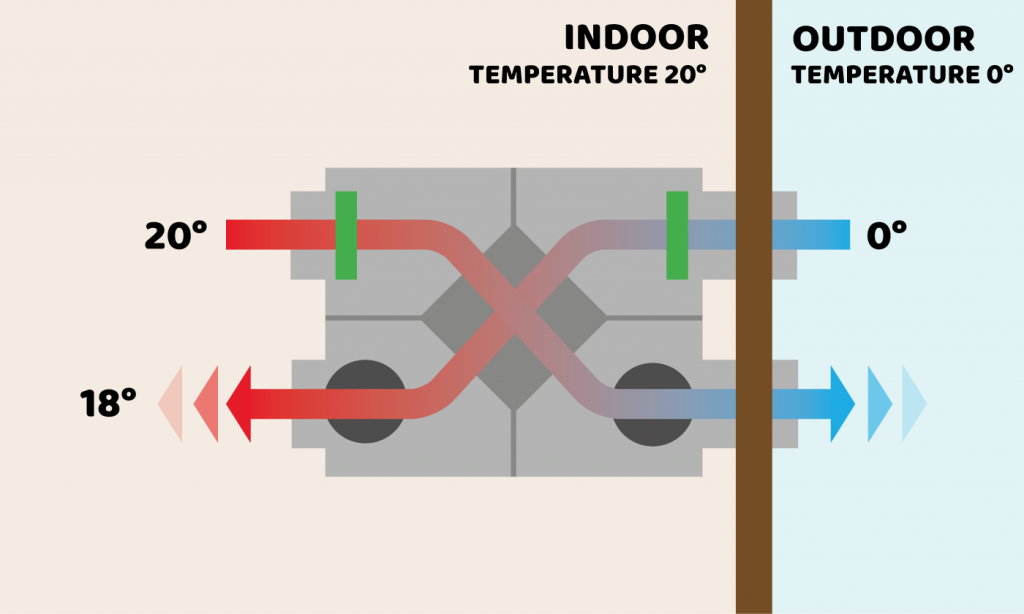The All-Inclusive Overview to the Uses of Heat Recovery Ventilation in Modern Buildings
Heat Recovery Ventilation (HRV) systems stand for a significant improvement in building innovation (HRV Heat Recovery Ventilation). They give a technique for exchanging stagnant interior air with fresh exterior air while lessening power loss. This technique not only enhances interior air high quality yet additionally adds to power effectiveness in both household and commercial structures. Comprehending the various applications and advantages of HRV can disclose its important duty in modern layout and sustainability efforts. The ramifications of this modern technology are worth discovering further
Understanding Heat Recovery Ventilation Equipments

Many modern structures focus on power effectiveness, recognizing warm healing ventilation (HRV) systems is vital for enhancing interior air quality and lowering power consumption. HRV systems function by transferring heat from stagnant interior air to incoming fresh air, successfully keeping comfortable indoor temperatures while minimizing power loss. These systems contain a warmth exchanger, followers, and ductwork that assist in the blood circulation of air. Throughout wintertime, HRV units capture and recycle warm from the outward bound air, while in summer season, they can aid cool inbound air. By constantly exchanging air, HRV systems also reduce moisture and the concentration of interior contaminants. Appropriate installation and upkeep of HRV systems are crucial for their effectiveness and efficiency in enhancing total structure efficiency and convenience.
Advantages of Heat Recovery Ventilation
Heat recovery ventilation systems supply many advantages that enhance both power performance and indoor air quality in modern-day buildings. By capturing and recycling power from exhaust air, these systems substantially reduce cooling and heating expenses, bring about lower power usage. Additionally, they keep a constant flow of fresh exterior air, decreasing the danger of interior air pollutants and irritants. This continual exchange helps manage moisture levels, preventing mold growth and ensuring a healthier living atmosphere. Additionally, HRV systems add to sustainability objectives by decreasing general carbon footprints. Their capacity to optimize ventilation without compromising thermal convenience makes them a beneficial enhancement to contemporary structure layout, advertising both economic and eco-friendly advantages.
Applications of HRV in Residential Buildings
As house owners significantly focus on power performance and indoor air top quality, the applications of warm healing air flow (HRV) systems in property buildings have actually ended up being a lot more prevalent. HRV systems are specifically helpful in tightly sealed homes, where keeping fresh air circulation is important for avoiding dampness build-up and indoor contaminants. They properly transfer warmth from outbound stagnant air to inbound fresh air, lowering energy costs connected with heating & click here now cooling. Furthermore, HRVs can improve convenience levels by managing humidity and temperature level. They are also versatile for various household designs, consisting of single-family homes and multi-unit buildings. In general, integrating HRV systems supports lasting living methods while making certain a healthier indoor environment for owners.
HRV in Industrial and Commercial Setups
In commercial and industrial settings, the application of warm recuperation air flow (HRV) systems has become significantly crucial for optimizing energy efficiency and keeping air top quality. These systems successfully transfer warmth from exhaust air to inbound fresh air, reducing the requirement for additional heating or cooling. This not just reduces energy prices but additionally adds to sustainability initiatives. Industries such as production, warehousing, and office complex profit greatly from HRV systems, as they assist regulate temperature and moisture degrees, making certain a comfortable and productive setting. Moreover, HRV systems aid in getting rid of contaminants and excess wetness, improving indoor air high quality. As laws around air top quality end up being more stringent, the fostering of HRV innovation is likely to grow, making it an important element of modern commercial and commercial framework.
Future Patterns in Heat Recovery Ventilation Technology

Frequently Asked Concerns
Exactly How Does Heat Recovery Ventilation Impact Indoor Air Quality?
Heat recovery ventilation substantially enhances interior air high quality by continuously exchanging stagnant indoor air with fresh outside air while recuperating power. This procedure minimizes pollutants, maintains suitable humidity levels, and guarantees a healthier setting for passengers.
Can HRV Systems Be Mounted in Existing Structures?
HRV systems can without a doubt be mounted in existing structures. Retrofitting might require alterations to ductwork and ventilation designs, but it considerably boosts power efficiency and indoor air high quality, making it a viable option for older structures.
What Maintenance Is Required for HRV Equipments?

Are There Particular Climates Where HRV Is A Lot More Reliable?
Heat recovery ventilation systems are particularly reliable in environments with significant temperature level differences between seasons. click here for more These systems maximize energy efficiency by recovering warmth from exhaust air, making them excellent for both chilly and reasonably warm settings.
Just How Do HRV Solutions Affect Power Bills?
